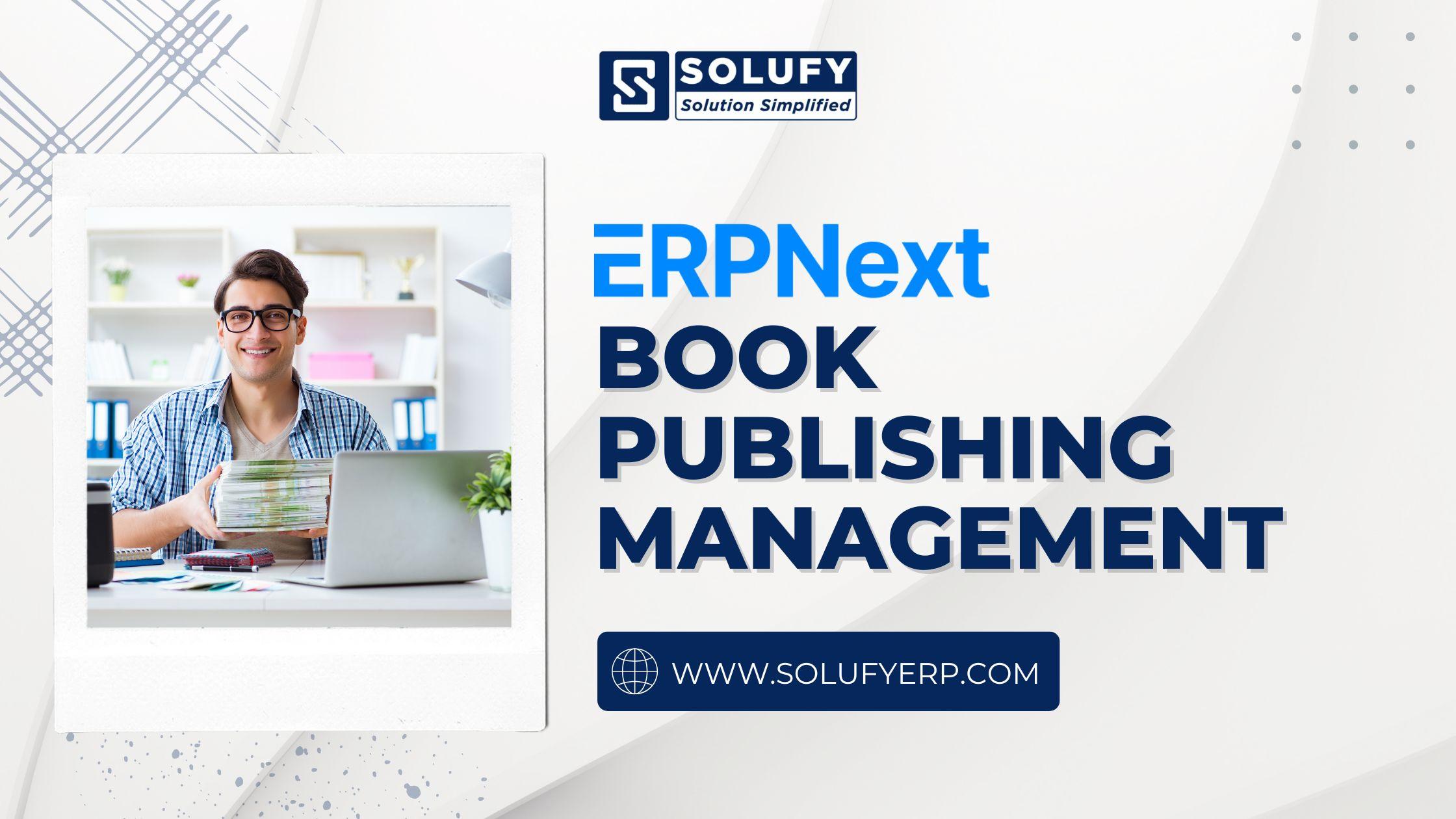Publishing is all about efficiency, accuracy, and seamless collaboration in a fast-paced world. With the ERPNext Book Publishing Management System, automating and streamlining operations from manuscript proposal to royalty payments has been made easier for publishing houses. This innovative tool, built on ERPNext Version 15, provides end-to-end support at every stage of the publishing process.
Let’s dive into the features, workflows, and benefits of this comprehensive management system.
The ERPNext Book Publishing Management System. It integrates key processes, such as manuscript submission, contract management, editing, design, production, and tracking of sales, to make things more efficient and ensure that all stakeholders are kept informed and on the same page within the book publishing life-cycle.
Key Features and Workflows
1. Submission of Manuscript Proposals
The process starts with authors submitting their manuscript proposals directly through the system’s website interface. Each proposal contains:
Synopsis and target audience details.
Unique selling points of the book.
Metadata like the book title, subtitle, author name, and an overview.
Other elements like the table of contents and sample chapters.
The system keeps all data in an organized manner, which is a good basis for the evaluation process.
2. Proposal Evaluation and Editorial Review
After the proposals have been submitted, they are put through an editorial review thoroughly. For approved proposals, the system automatically creates draft contracts for the following:
Royalty percentages.
Payment terms, which include advances and payment schedules.
Manuscript submission timelines.
The contract may be viewed and finalized by both parties within the system. Digital signatures are captured, and a status of “Signed” is updated to reflect the secure and efficient agreement process.
3. Agreement Management
The system excels at handling contract agreements- with perfect royalty tracking, payment terms, and deadlines. Some of the benefits are as follows:
Automated contracts are generated for approved proposals.
Review and approval processes are transparent.
Finalized contracts have secure digital signatures.
An automated copy of the contract is sent to authors, thus maintaining clarity and trust.
4. Manuscript Submission
Authors submit their manuscripts to the system. It scans completeness according to predefined criteria, such as:
Files needed and formats involved
Word count limits.
The manuscript submission status updates dynamically as it moves through the following stages:
- Not Submitted.
- Submitted.
- Under Review.
Additionally, authors can upload chapter-wise material, with each chapter having statuses such as:
- Not Started.
- Under Review.
- In Progress.
- Completed.
5. Editing and Proofreading
Quality requires effective editing workflows. The system enables:
Assignment of manuscripts to editors and proofreaders.
Tracking of milestones such as:
- Initial editing.
- Author feedback integration.
- Final proofreading.
The iterative process ensures that every detail is reviewed and approved before advancing. Once finalized, the status updates to “Editing Completed.”
6. Typesetting and Design
The system supports design and layout teams in creating visually appealing book formats:
- Draft layouts and cover designs are uploaded for author feedback.
- Changes and approvals are meticulously tracked.
- Once approved, files are locked for production, and the status updates to “Design Completed.”
This facilitates an easy transfer to the production stage.
7. Printing and Production
The final manuscript and design files are submitted to printers. The system facilitates the production process through the following:
Generation of a detailed print order, including quantity, specifications, and deadlines.
Monitoring of real-time production status.
When the printing is over, the system updates the status to “Printing Completed,” ensuring visibility and accountability.
8. Marketing and Distribution
The system assists publishers in marketing campaign planning and execution, which includes:
- Social media promotions.
- Author interviews and book launches.
Distribution channels, such as retailers and online platforms, are also easily integrated. The system tracks inventory levels across warehouses and distribution points, updating the status to “Ready for Sale.”
9. Sales and Royalties Management
Sales and royalty management are a core part of a publishing house’s operations. The system makes these processes much easier:
Book sales are tracked, and royalties computed on the following bases:
Data from sales
Contract conditions
The royalty will be computed automatically for every author and the same purchase invoice created for the accounting records of transparency
Timely royalty payment will be done for all the authors.
Sales analysis with details of all payouts will be created.
Reports and Detailed Data
The book publishing management system under ERPNext offers detailed reports of each process of the publication.
Manuscript and Contract Reports
- Manuscript Proposal Summary Report: Summarises proposals and their statuses.
- Contract Summary Report: Details of signed and pending contracts.
Sales and Financial Reports
- Book Sales Revenue Report: Tracks sales performance across channels.
- Royalty Invoice Report: Provides transparency in royalty payouts.
These reports empower publishers to make data-driven decisions, optimise operations, and drive profitability.

Why Choose ERPNext Book Publishing Management System?
The ERPNext Book Publishing Management System is a game-changer for publishing houses. The major benefits include the following:
- Enhanced Efficiency: Automated workflows minimize errors and speed up the process.
- Collaboration and Transparency: The authors, editors, designers, and publishers collaborate on one single platform.
- Comprehensive Oversight: The system tracks all stages, from manuscript submission to royalty payouts.
- Scalable Solution: This solution caters to publishing houses of all sizes.
Conclusion
In an industry driven by deadlines and creative collaboration, the ERPNext Book Publishing Management System offers a powerful solution to streamline operations and enhance productivity. By automating workflows and providing real-time visibility into every stage of the publishing process, it ensures that publishers can focus on what truly matters: creating and delivering great books.
Discover the future of publishing with ERPNext, where your operations just take it to the next level by embracing innovation, ensuring efficiency, and delivering excellence.

